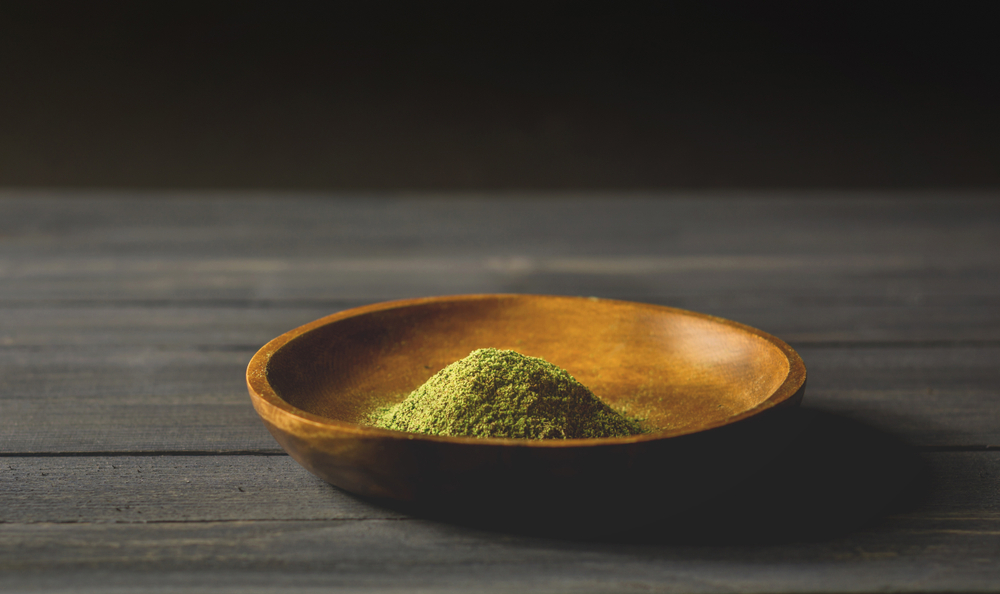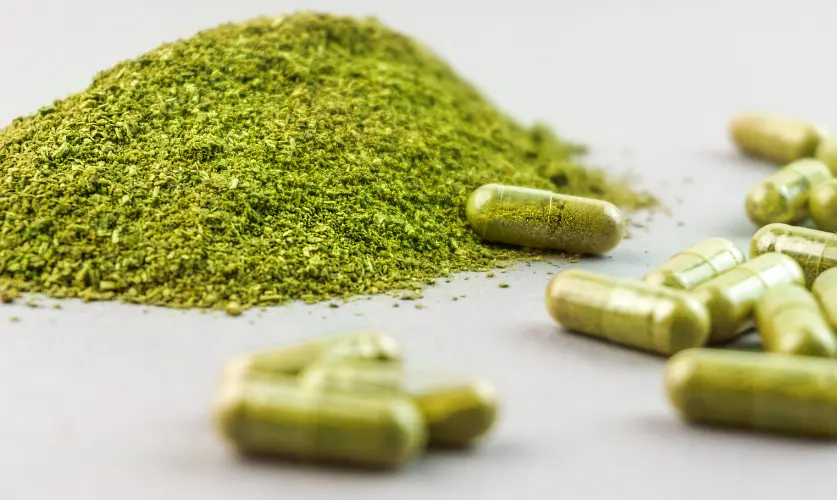The kratom plant is a tree that is native to parts of Southeast Asia. Even though the plant is quite common, its medicinal properties have only recently come to the fore. The plant is used to make leaf and stem extracts that are sold in pharmacies and herbalist shops all over the world. What makes these extracts so popular?
People usually use the plant to relieve pain, reduce stress and prevent fatigue. The list of possible benefits goes on and on. However, this article is not about the benefits of kratom. Instead, we are going to talk about the dangers of using kratom. Once you understand the dangers of this drug, you should only use the plant if you want to. Keep reading to find out more.
What is Kratom?
Kratom (Mitragyna speciosa) is a member of the coffee family native to Southeast Asia. The kratom plant grows to be between 4 and 10 meters tall, has large leaves and is known by many different names, including Thang, Thummu, Biak, and Biak bi. Its cousin, the tree evergreen Mitragyna javanica, grows in tropical and subtropical regions of Africa and Asia.
Kratom is part of the same species as the coffee plant, and its use has been associated with the ancient practice of coffee cultivation. In the 16th century, the Portuguese received reports that the biomass found in the jungles of Southeast Asia was beneficial for pain management, as well as for stimulation and mood elevation. Coffee and kratom are both native to the same region of the world, and researchers have speculated that the two plants have a long history of cross-fertilization.
What Does Kratom Look Like?
The kratom tree has glossy green leaves that are usually oval or elliptical in shape. These leaves can grow to 8 inches in length and 4 inches in width, and they have a slick and soft feel. They are usually collected when they are still young because their potency decreases as the tree grows older. The leaves are usually dried, then crushed into a fine powder, which can be taken in a number of ways, including stirred into beverages or put into capsules.
How Does it Work?
It is not fully understood how kratom works. It is believed to interact with opioid receptors in the brain, and to have a stimulating effect. It has been used traditionally to treat chronic pain, both in humans and animals. The opioid receptors may be the key to how kratom works. Opioid receptors are part of the reason that painkilling drugs such as morphine and fentanyl have such a powerful effect on the body.
It is important to note that kratom is not an opiate, despite what some people might tell you. Opiates are drugs produced from the opium plant, which includes heroin and morphine. This substance is not an opiate and has not been proven to have any opiate-like effects. Rather, the plant might interact with opioid receptors in the brain and has been used in Traditional Chinese Medicine to treat opiate addiction.
Side Effects of Kratom
The most common side effect of kratom is constipation. When ingested, it is known to slow the rate of digestion, which can lead to a build-up of unabsorbed toxins in the digestive tract. This can cause abdominal pain, as well as dark green diarrhea. Other side effects of kratom include dry mouth, headache, fatigue, dizziness, and depression. Users of kratom should be aware of these side effects and take note of whether they experience them during use. If you notice any of these side effects, it is a good idea to cut back on the amount you consume.
Those who use kratom may consider it to be of some benefit, but researchers who have studied the substance feel that its negative effects and potential for harm far exceed any potential positives. Poison control centers throughout the US have received around 1,800 reports of kratom usage from 2011 to 2017, some of which resulted in fatalities. Half of the cases that were reported resulted in severe negative reactions such as seizures and high blood pressure. Five of the seven babies exposed to kratom went through withdrawal. It has been determined that kratom is likely unsafe when ingested orally. Other side effects may include:
- Dry mouth
- Weight loss
- Liver damage
- Muscle aches
- Drowsiness
- Breathing suppression
- Reduced blood pressure
- Hallucinations
- Delusions
- Excessive sweating
Is it Addictive?
While kratom is not an addictive drug per se, it does have a high concentration of the alkaloid mitragynine, which is known to be addictive. People who use this drug regularly may become tolerant to the alkaloid, and therefore require higher dosages to achieve the same effect. Those who abuse kratom may develop a dependence on it, meaning that they will continue to use the drug even when they know it is making them sick.
Why Is Kratom Such A Danger?
The reason why kratom is such a danger is that it can have very dangerous side effects. The substance has been linked to cases of liver toxicity, and may also have a negative effect on the heart and blood vessels. In some cases, people have even died from consuming kratom. It is important to understand the dangers of this drug, and not use the plant if you don’t want to risk hurting yourself.
In addition, kratom remains an unregulated substance. The DEA has not classified kratom as a controlled substance and therefore it is not regulated under the Controlled Substances Act. However, the FDA has warned against consuming kratom or any products containing kratom, due to its toxicity and the possibility of addiction, misuse, and reliance.
From 2014 the FDA has directed that shipments containing kratom or any dietary supplements with kratom should be confiscated. In 2019, six states including Alabama, Arkansas, Indiana, Wisconsin, Rhode Island, and Vermont have criminalized the possession of kratom. On the other hand, kratom is permitted in other parts of the United States and can be acquired from stores or websites.
Kratom Overdose
Although rare, there have been some incidents where detrimental side effects have been reported with either long-term consumption of kratom or acute overdose/poisoning, and these can include:
- Nausea and vomiting: Kratom can cause digestive upset, and taking too much may lead to nausea and vomiting.
- Drowsiness: Kratom can have sedative effects, and taking too much may cause drowsiness or even unconsciousness.
- Confusion: Kratom can alter mental functioning and impair cognitive abilities, and taking too much may cause confusion or disorientation.
- Constipation: Kratom can cause constipation, and taking too much may lead to more severe constipation.
- Seizures: In rare cases, kratom use has been associated with seizures.
Kratom Withdrawal
Some people use kratom as a recreational drug, while others use it as a way to treat opioid addiction or to alleviate withdrawal symptoms. However, using kratom can also lead to dependence and withdrawal. Symptoms of kratom withdrawal can include:
- Agitation
- Aggression
- Runny nose
- Insomnia
- Sweating
- Watery eyes
- Depression
- Anxiety
- Restlessness
- Mood swings
- Nausea
- Muscle aches
It is important to note that the severity and duration of kratom withdrawal can vary depending on the individual and the amount and frequency of kratom use. If you are experiencing kratom withdrawal and want to stop using the drug, it is important to seek medical help. Withdrawal from any substance can be difficult and potentially dangerous, and it is important to have medical supervision and support to ensure a safe and successful recovery.
Summing up
Kratom is a plant native to Southeast Asia, and is related to the coffee plant. It is sometimes used to relieve pain, reduce stress, and increase energy levels. The plant is known to have some side effects, however, and can also be dangerous if used incorrectly. It is important to understand the dangers of kratom, and only use the plant if you want to.
Trust the Experts at Knoxville Recovery Center
Addiction can affect anyone. If you or a loved one are currently struggling with drug use or addiction, help is available! We encourage you to reach out to the professionals at Knoxville Recovery Center to learn more about our personalized treatment programs and mental health services.
Knoxville Recovery Center was founded from firsthand experience of addiction and recovery, with a mission of providing a space where people can heal from addiction and other disorders in a compassionate, creative, open-minded, and heart-centered environment. We believe recovery is always possible. Our experts work with you to design a treatment plan that fits your needs. Common treatment programs include:
- Intensive Outpatient Programs (IOP)
- On-site Detox
- Full-time Addiction Treatment on campus
- Mental Health Treatment
- Aftercare Services
Contact us today for more information about how our programs and services can help you get your life back on track. You no longer have to struggle with substance abuse on your own. We are here to help.












